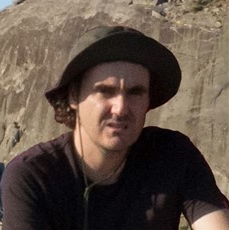Geodiversity Assessment: What, Why and How?
A special issue of Resources (ISSN 2079-9276).
Deadline for manuscript submissions: closed (30 September 2022) | Viewed by 46625
Special Issue Editor
Interests: geodiversity; geoheritage; geomorphology
Special Issues, Collections and Topics in MDPI journals
Special Issue Information
Dear Colleagues,
The term “geodiversity” emerged 30 years ago to define the range of geological (rocks, minerals, fossils, landforms, physical processes, soil, and hydrological) features, including their assemblages, structures, systems, and contributions to landscapes. Traditionally associated with the theme of geoconservation, it has increasingly come to be perceived as a much broader topic, with influence on approaches that cover all domains of the geosciences.
In several approaches, geodiversity has been characterized in qualitative and/or quantitative procedures, generally supported in three main questions: “What?” is related to the type of geodiversity elements present in a certain area and its spatial distribution, which determines the scale of the analysis; “why?” represents the goals of its characterization and cartographic representation, such as education, outreach, land use planning or nature conservation; and “how?” deals with the selection of the method(s) and criteria for geodiversity characterization and assessment.
In the same way, interest in the cartographic representation of geodiversity has grown in recent years, as evidenced by the high number of scientific publications dedicated to this topic, mainly to quantitative methodologies and geodiversity indices. However, the purpose of mapping spatial geodiversity has not yet been properly demonstrated. Are these cartographic data applicable in the context of land use planning? Are they a tool for environmental management or nature conservation, similar to biodiversity? Is there a close relationship between them and the spatial distribution of biodiversity? These are some relevant questions that arise at a time when more and more researchers are paying attention to geodiversity topics, thus making it necessary to clearly define the object, objectives, and methods.
Therefore, in addition to conceptual discussions around geodiversity features (what?) and assessment methods (how?), one of the main current challenges is demonstrating why geodiversity is important in ecosystem services, in implementing nature conservation and land use policies, in its direct relationship with biodiversity, in ecosystems restoration, and as part of natural capital.
Manuscript submissions focusing on geodiversity assessment are welcome and encouraged. The topics of interest include but are not limited to:
- Methods to assess geodiversity;
- GIS and mapping of geodiversity;
- Assessment of ecosystem services from geodiversity;
- Relations between geodiversity and biodiversity;
- Relations between geodiversity and geoheritage;
- Relations between geodiversity and land-use;
- Geodiversity data for land-use planning;
- Geodiversity data for nature conservation.
Dr. Paulo Pereira
Guest Editor
Manuscript Submission Information
Manuscripts should be submitted online at www.mdpi.com by registering and logging in to this website. Once you are registered, click here to go to the submission form. Manuscripts can be submitted until the deadline. All submissions that pass pre-check are peer-reviewed. Accepted papers will be published continuously in the journal (as soon as accepted) and will be listed together on the special issue website. Research articles, review articles as well as short communications are invited. For planned papers, a title and short abstract (about 100 words) can be sent to the Editorial Office for announcement on this website.
Submitted manuscripts should not have been published previously, nor be under consideration for publication elsewhere (except conference proceedings papers). All manuscripts are thoroughly refereed through a single-blind peer-review process. A guide for authors and other relevant information for submission of manuscripts is available on the Instructions for Authors page. Resources is an international peer-reviewed open access monthly journal published by MDPI.
Please visit the Instructions for Authors page before submitting a manuscript. The Article Processing Charge (APC) for publication in this open access journal is 1600 CHF (Swiss Francs). Submitted papers should be well formatted and use good English. Authors may use MDPI's English editing service prior to publication or during author revisions.
Keywords
- geodiversity
- assessment
- methods
- ecosystem services
- mapping
- GIS
- geoheritage





